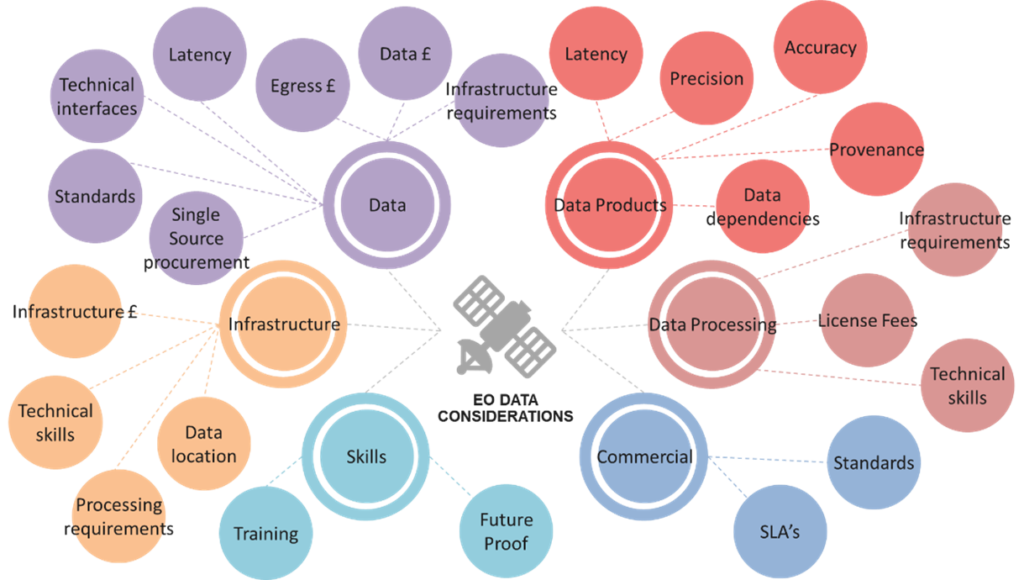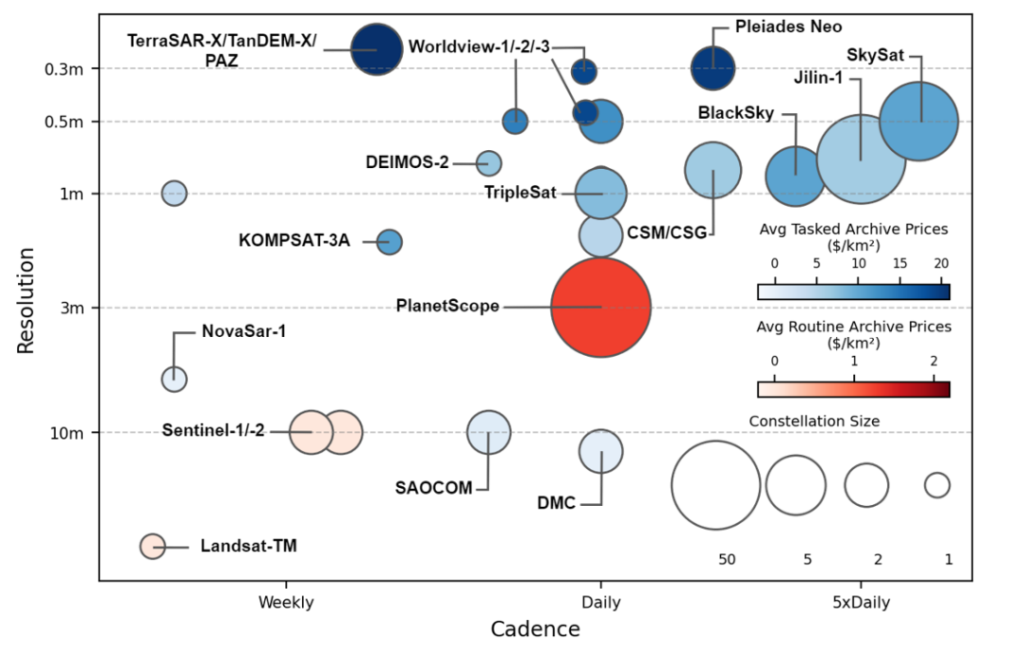Facilitating the Commercial and Satellite Data Divide
Marketing


Satellite Data Empowers Business
At a basic level, data analysis for business can support continuous improvement by understanding operating environments, improving processes, reducing wastage, and optimising time. Knowledge is power; and the use of qualified data can ultimately improve the bottom line by maximising resources, thus ensuring sustainability. Supporting company sustainability or securing a competitive advantage over another can often be attributed to an organisation’s ability to innovate and develop systems using existing technology.
The technological era has delivered innumerable datasets with the potential to be a key business tool to drive intelligent led decisions and enable commercial insight. Of course, rubbish in, means rubbish out; so, the exploitation of the correct data is of paramount importance and requires constant monitoring.
Lastly, the conviction to align business operations to a set of data inputs calls for trust. Trust in the source, content, system, and data is essential. To solve this, businesses seek data that is unbiased, accurate, instantaneous, repeatable, and scalable. Satellite data has all these attributes; but how do organisations engage to extract value from this data as a business-as-usual tool?
Innovation is led by Business Challenges
With seemingly exponential growth in technology, it is more difficult than ever to navigate its value for a particular user context. Analysing the seemly endless amount of data, now available to us, constitutes a major technological challenge. Space is a large contributor to this, in part because the costs of sending satellites into orbit have significantly reduced over the last decade. This phenomenon has led to an exponential number of satellite launches, resulting in a plethora of available data.
Essentially, satellite data comes in two forms (open source and paid for) and the choice to use either depends on several factors including the technical and functional requirements of use as well as the overall value proposition for the user. In general, paid for sources of data tend to be available on demand and contain greater levels of information e.g., higher spatial resolution, compared to open sources of data. Often, but not always, this translates to greater commercial value but there is a dependency, in either case, to apply complex analytics to gain valuable insight. The ability to manage the data towards a desired outcome through a process of value adding is often where the commercial opportunity exists.
With all the Earth observation data now in circulation, there are very few modern businesses that would not derive value out of data derived from satellites. Its application today includes financial transactions, insurance oversight, real-estate management, logistics, verifications, connectivity or product sourcing; supporting and underpinning many important business functions.
Earth observation is the gathering of data about the Earth’s physical, chemical or biological systems through measurement instrumentation carried on satellites. This data can be used to assess and monitor the status or changes in the natural or manmade environment globally through its translation into valuable insights.
When it comes to the application of Earth observation data, business drives innovation, drawing upon existing technology and finding design expertise to create the solution. Technological development does not drive innovation; business challenges present the catalyst to inspire and generate transformation. However, the task of marrying and aligning commercial enterprise with satellite derived data to create an innovative solution is complex and challenging. For example, where does a business even start to find data and the right resources with design and technical expertise? To some degree, the process to innovate and find a business solution begins with understanding what manipulations of aligned available data can deliver.
Getting to Know Your Data
Deciding on what data to use is challenging and technically complicated with many criteria to consider. In the case of Earth observation data, the complexity of use is dependent on trade-offs in variables such as accuracy and frequency of information as well as factors driving exploitation such as infrastructure, technology, and skills. Robust design approaches are crucial when developing a fit for purpose solution and knowing how to process the data calls upon specialised technical expertise.

An illustration of data considerations when trying to develop a new service
The Traditional Decision-Making Process for Consumers Purchasing/Accessing Earth Observation Data
There are many data sources available but identifying which are fit for purpose and the best means for purchasing/access is the challenge. Unfortunately, there isn’t just one provider per data type and whilst new business models, increasing variety and number of sensors combined with advances in cloud technologies mean Earth observation derived information is more accessible than ever and viable as a technology for business, the marketplace for data is inherently more complex to navigate.

A summary of EO Satellite Constellations, their Resolution, and Cadence
Seizing the Moment
For business, the time is now to be engaging with the space sector to benefit from the increasing data available. All manner of daily business applications and decision making now rely on satellite data. Integrated with Artificial Intelligence (AI), technology led solutions are truly upon us and are being manipulated to deliver an increasing myriad of business and everyday opportunities.
But where to begin as this connection between what satellite data can deliver and business applications continues to strengthen and metamorphosis? For businesses operating in a totally different sector, drawing upon unrelated skills, the process can be daunting and confusing. A business far removed from technology may understand it needs to progress using data but has no conception of where to begin engaging in a seemly intimating and foreign arena, particularly when the conversation turns to satellites.
From the perspective of the space sector, the challenge is to translate advances in technology to business value. Historically, the space sector was government owned and non-commercially orientated. This has changed completely over the last decade and enterprise now drives development. However, to sustain itself and continue this trajectory, the space sector needs to sell itself, breakdown barriers to entry and stimulate commercial conversations with all sectors that can benefit from this technology.
To bridge the gap between business and what satellites can offer, the UK Space sector has over time established independent centres for engagement with enterprise to facilitate the business of data transfer and technological development. One such trusted UK business partner created to break down silos with sector insight into data access is the Space Commercialisation Engine.
The Space Commercialisation Engine
Reducing this business data divide and encouraging the appropriate technology to underpin modern business is at the heart of the Space Commercialisation Engine (SCE). Linking UK government funding with enterprise, this programme operates out of Space Park Leicester and encourages the commercialisation of Earth observation ideas. Acting at a central conduit between technology and business, the SCE can fast track product development and de-risk route to market, helping businesses to navigate the complexities of using and extracting value from satellite technology – https://sa.catapult.org.uk/space-commercialisation-engine/
References:
https://blog.gclb2b.com/blog/5-steps-to-buying-b2b-data-for-the-public-sector
https://up42.com/blog/tech/a-definitive-guide-to-buying-and-using-satellite-imagery
https://up42.com/blog/tech/a-definitive-guide-to-buying-and-using-satellite-imagery